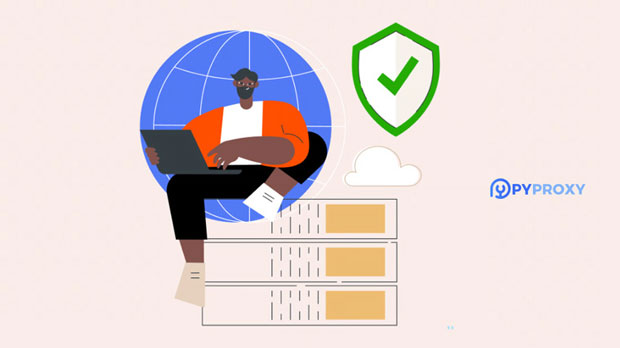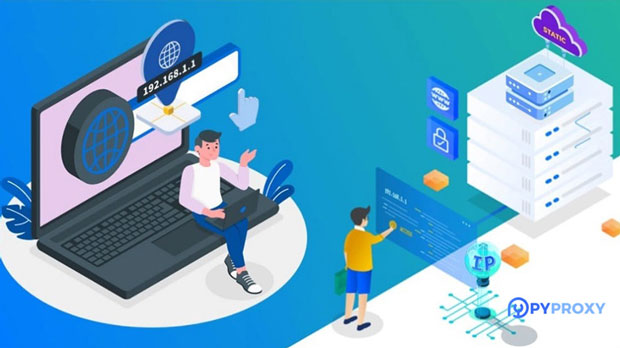A SOCKS5 configurator is a tool that allows users to set up and manage socks5 proxy servers. socks5 proxies are popular for their ability to route internet traffic through a remote server, offering users anonymity and enhanced security. This configurator typically enables users to define specific settings such as the proxy's IP address, port, and authentication methods. In comparison to other proxy types like HTTP and HTTPS, SOCKS5 stands out due to its versatility and support for various protocols, making it highly effective for tasks such as browsing, gaming, and torrenting. Understanding the differences between SOCKS5 and other proxy types is crucial to selecting the right option for specific needs. What is a SOCKS5 Configurator?A SOCKS5 configurator is an essential tool for users who want to configure a SOCKS5 proxy on their system. SOCKS (Socket Secure) proxies work by relaying traffic between a user's device and a remote server, acting as an intermediary. SOCKS5 is the latest version, offering significant improvements over its predecessors in terms of security, performance, and functionality.The configurator is a piece of software or an interface that allows users to enter specific details about their desired proxy server, such as the IP address and port number. Additionally, it may allow users to configure authentication settings, enabling secure access to the proxy. By utilizing this tool, users can establish a reliable connection to the internet via the SOCKS5 proxy, ensuring that their online activities remain private and secure.How Does SOCKS5 Differ from Other Proxy Types?When evaluating different proxy types, it's important to understand how SOCKS5 compares to alternatives such as HTTP, HTTPS, and other SOCKS versions. Below is a breakdown of the key differences:1. SOCKS5 vs. SOCKS4SOCKS5 is the successor to SOCKS4, offering several notable enhancements. The primary difference between SOCKS4 and SOCKS5 is that SOCKS5 supports a wider range of protocols and methods. While SOCKS4 only supports TCP (Transmission Control Protocol), SOCKS5 can handle both TCP and UDP (User Datagram Protocol). This added flexibility makes SOCKS5 ideal for applications like gaming, video streaming, and VoIP (Voice over Internet Protocol), where UDP is often preferred due to its lower latency.Moreover, SOCKS5 supports authentication methods, which enhances its security. SOCKS4 lacks this feature, leaving users vulnerable to unauthorized access. The addition of authentication in SOCKS5 ensures that only authorized users can access the proxy service, improving overall security.2. SOCKS5 vs. HTTP ProxyHTTP proxies are designed to handle web traffic (HTTP and HTTPS protocols), whereas SOCKS5 proxies are more versatile and can handle all kinds of internet traffic, including HTTP, FTP, SMTP, and more. This versatility gives SOCKS5 a distinct advantage in certain scenarios, particularly when a user needs to anonymize or secure traffic from different applications beyond just web browsers.Furthermore, SOCKS5 proxies do not modify or inspect the data packets passing through them. This means they can route any type of traffic without altering its contents. In contrast, HTTP proxies specifically handle HTTP requests and can inspect and manipulate web traffic, which could introduce potential security risks or performance issues.While HTTP proxies are often easier to configure and can provide basic anonymity for web browsing, SOCKS5 proxies are better suited for more complex use cases where privacy, speed, and security are paramount.3. SOCKS5 vs. HTTPS ProxyHTTPS proxies are similar to HTTP proxies but are designed to handle secure HTTP traffic (i.e., encrypted traffic over HTTPS). While HTTPS proxies encrypt the data being transmitted, they still only support HTTP and HTTPS traffic. In contrast, SOCKS5 can route various types of traffic, including encrypted HTTPS traffic, but without inspecting or altering it.The key advantage of SOCKS5 over HTTPS proxies is its broader application. An HTTPS proxy is primarily used for web browsing with encrypted connections, whereas SOCKS5 can handle everything from web browsing to file transfers, email communication, and even P2P file sharing. This makes SOCKS5 the preferred choice for users seeking comprehensive privacy and anonymity across a variety of internet activities.Moreover, unlike HTTPS proxies, SOCKS5 proxies typically do not perform encryption themselves. Instead, they act as a transparent conduit for traffic, leaving encryption to the protocols themselves (e.g., HTTPS). This ensures that there is no unnecessary overhead introduced during data transmission.4. Performance: SOCKS5 vs. Other Proxy TypesWhen it comes to performance, SOCKS5 proxies are generally regarded as more efficient than HTTP or HTTPS proxies. Since SOCKS5 does not modify or inspect the data, there is less latency and fewer chances of slowdowns, which is particularly important for applications like video streaming, gaming, or torrenting.HTTP and HTTPS proxies, on the other hand, can sometimes slow down the connection due to their involvement in inspecting and filtering traffic. HTTP proxies, in particular, are known to introduce latency since they process requests at a higher level. While HTTPS proxies secure connections, they may add additional overhead to the encryption process, which can further reduce speed.For users seeking the fastest, most efficient connection for general internet use or specific applications like P2P file sharing, SOCKS5 offers a clear advantage over both HTTP and HTTPS proxies.5. Security and Privacy: SOCKS5 vs. Other Proxy TypesIn terms of security and privacy, SOCKS5 is often considered the most robust option. It supports multiple authentication methods, providing an added layer of security to prevent unauthorized access. Unlike HTTP and HTTPS proxies, which can potentially leak user data (such as IP addresses) or allow for tracking by third parties, SOCKS5 proxies keep user information private and secure by forwarding traffic without modification.Additionally, SOCKS5 proxies are less likely to be detected by websites and services, making them a preferred choice for individuals seeking to maintain a low profile online. This is especially useful for users engaging in activities like web scraping, bypassing geographic restrictions, or maintaining anonymity while accessing sensitive information.While HTTPS proxies offer encryption and HTTP proxies offer basic anonymity, neither provides the same level of versatility and security offered by SOCKS5 proxies.Conclusion: Which Proxy Type Should You Choose?When choosing between SOCKS5 and other proxy types, the decision largely depends on the specific needs and use cases. SOCKS5 is the ideal choice for users who require a high level of privacy, security, and performance across a range of applications. It excels in environments where diverse types of traffic need to be routed efficiently and securely.If your primary goal is web browsing and accessing secure websites, an HTTPS proxy may suffice. However, if you need more flexibility, speed, and anonymity for activities such as gaming, P2P file sharing, or streaming, SOCKS5 is the better option.In conclusion, SOCKS5 stands out as the most versatile and secure proxy type, making it a valuable tool for a wide range of internet activities. Understanding its advantages over other proxy types can help users make an informed decision based on their specific needs.
Jan 14, 2025
![arrow]()




























































